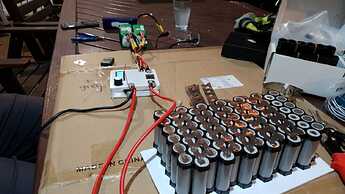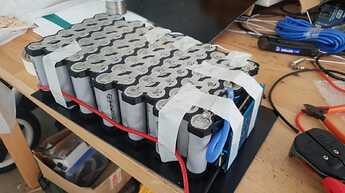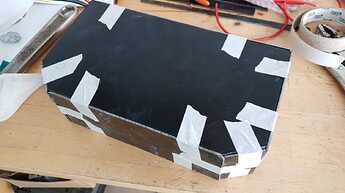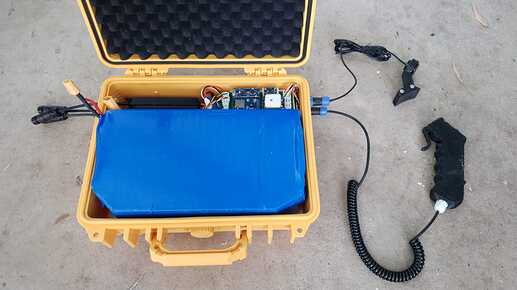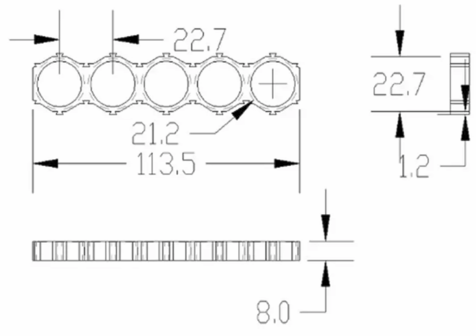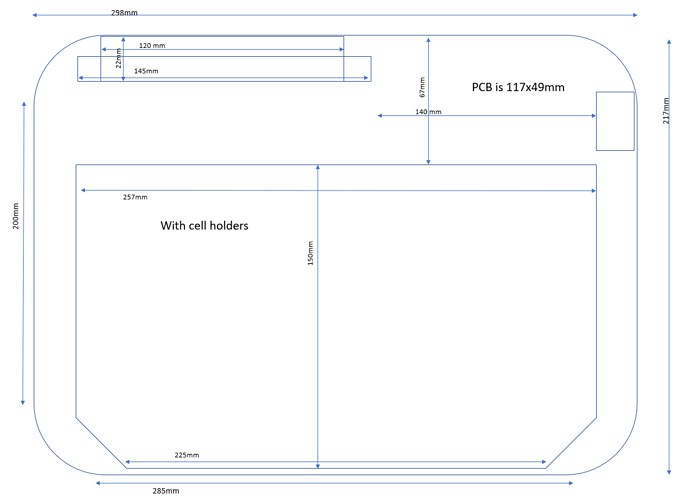Built a 48V 30Ah pack with Tesla 21700 factory second cells. Total cost was A$660
- 13S6P (total 78) Tesla 21700 5Ah factory second cells - A$540
- Cell holders (21700 staggered) - A$15
- Nickel strips (0.2mm thickness) - A$10
- 40A BMS - A$45
- G10 fibreglass sheets - A$30
- PVC heat-shrink - A$20
- 12 AWG copper cables + XT-90 connector - A$5
Tested cells with 4-probe ESR meter and all with in spec. These seconds are pretty decent and pretty good value, they are rejected due to defects in pack assembly, not due to any cell defects. The cells are rated to 2C so the overall pack is capable of delivering 60A (or 3kW) which is the max power my system needs to take-off.
Use staggered cell holders so the pack would fit in my waterproof box and leave enough space for the ESC and other electronics.
The “K-weld” proved to be a reliable spot welder. First tried with a cheap spot-welder but that failed. This is also a good point to consider electrical safety, once the cells are wired in series the 50V can create a danger.
Also good to test the nickel strips are genuine nickel - a quick test is to scratch up a small test piece and leave in a glass on salt-water over night, if there are signs of rust then you have steel not nickel.
This is a cool frame from a slow-mo video of the spot weld being performed. The melting temperature of nickel is 1455C, and the spot welder puts through around 1200A for 20ms.
Notice the slots in the nickel strip, they are to help direct the current through the battery terminal rather than through the nickel strips to improve the weld. (Diagram credit: Introduction to battery pack design and building, Part-2 | ELECTRICBIKE.COM)

BMS and battery terminals soldered to nickel strips. I chose a 40A BMS as my cruising current is 30A. The over-current protection is 2.5x the rated stead-state current (so 100A). The Tesla cells also have 15A internal fuse which is handy.
Note it is important to evenly distribute the terminal wires to the terminal strips to avoid sinking too much current through the nickel strips.
All wrapped up in G10 fibreglass sheet. This is to protect against anything puncturing and shorting the cells. It also adds structural strength to the pack. Note this stuff is pretty difficult to cut.
For the final step the battery is covered in heat-shrink. It fits snugly in the box.
In the finished product, and ready to ride ![]()


